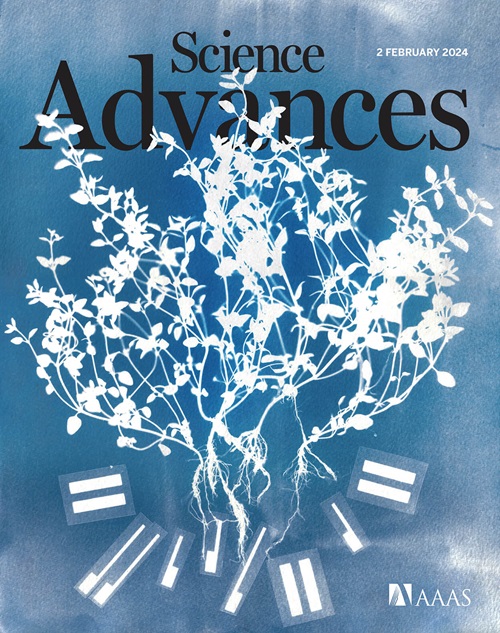HMCES corrupts replication fork stability during base excision repair in homologous recombination–deficient cells
IF 11.7
1区 综合性期刊
Q1 MULTIDISCIPLINARY SCIENCES
引用次数: 0
Abstract
Apurinic/apyrimidinic (AP) sites and single-strand breaks arising from base excision repair (BER) during the misincorporation of damaged nucleobases may hinder replication fork stability in homologous recombination–deficient (HRD) cells. At templated AP sites, cross-links between the DNA and 5-hydroxymethylcytosine binding, embryonic stem cell–specific (HMCES) regulate replication fork speed, avoiding cytotoxic double-strand breaks. While the role of HMCES at the template DNA strand is well studied, its effects on nascent DNA are not. We provide evidence that HMCES–DNA-protein cross-links (DPCs) are detrimental to the BER-mediated removal of 5-hydroxymethyl-2′-deoxycytidine (5hmdC)–derived 5-hydroxymethyl-2′-deoxyuridine from replication forks. HRD cells have heightened HMCES-DPCs, which increase further upon 5hmdC exposure, suggesting that HMCES binds both spontaneous and 5hmdC-induced AP sites. HMCES depletion substantially suppresses 5hmdC-mediated replication fork defects, chromosomal aberrations, and cell death in HRD cells. This reveals that HMCES-DPCs are a source of BER-initiated single-stranded DNA gaps, which indicates that endogenous DPCs contribute to genomic instability in HRD tumors.

求助全文
约1分钟内获得全文
求助全文
来源期刊

Science Advances
综合性期刊-综合性期刊
CiteScore
21.40
自引率
1.50%
发文量
1937
审稿时长
29 weeks
期刊介绍:
Science Advances, an open-access journal by AAAS, publishes impactful research in diverse scientific areas. It aims for fair, fast, and expert peer review, providing freely accessible research to readers. Led by distinguished scientists, the journal supports AAAS's mission by extending Science magazine's capacity to identify and promote significant advances. Evolving digital publishing technologies play a crucial role in advancing AAAS's global mission for science communication and benefitting humankind.
 求助内容:
求助内容: 应助结果提醒方式:
应助结果提醒方式:


